-
Baltzly, Benjamin (1835, Sugarcreek, Tuscarawas County, Ohio–1883, Cambridge, Massachusetts)
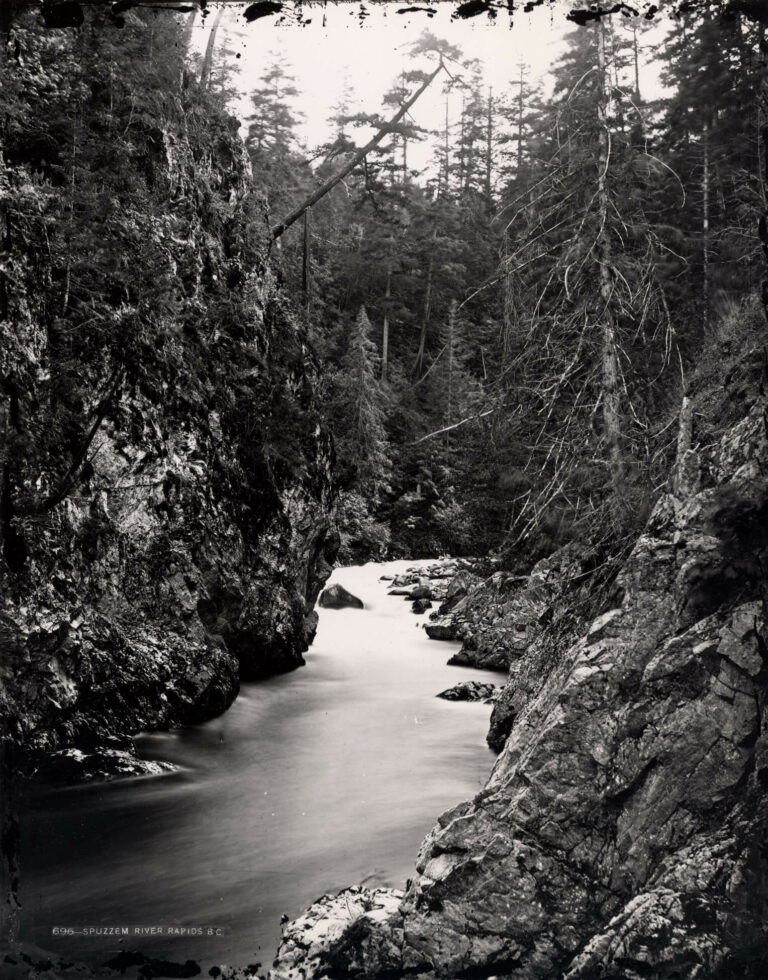
Baltzly was an American-born photographer who moved to Montreal shortly after the American Civil War. From 1868 to 1877 he worked for William Notman. During this time, he was assigned to the Geological Survey of Western Canada (1871) and, despite the rigours of the journey, produced a significant collection of photographs. Baltzly returned to the U.S. in 1879.
Image: Benjamin Baltzly, Spuzzum River rapids, BC, 1871, wet collodion negative, 25.4 x 20.3 cm, McCord Stewart Museum, Montreal.
For further reading, see:
Baltzly, Benjamin, and A.J. Birrell. Benjamin Baltzly: Photographs and Journal of an Expedition through British Columbia, 1871. Toronto: Coach House Press, 1978.
Cavaliere, Elizabeth. “Preface to Benjamin F. Baltzly’s Journal.” Journal of Canadian Art History / Annales d’histoire de l’art Canadien 35, no. 1 (2014): 16–25.
———. “The Journal of Benjamin F. Baltzly.” Journal of Canadian Art History / Annales d’histoire de l’art Canadien 35, no. 1 (2014): 26–129.

-
Barbeau, Charles Marius (1883, Ste-Marie-de-Beauce (later Sainte-Marie), Quebec–1969, Ottawa)
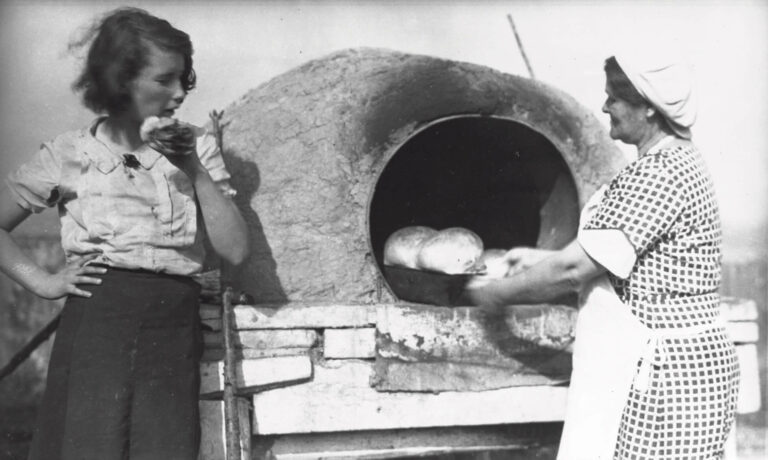
Barbeau was a leading anthropologist and ethnologist who worked for the Geological Survey of Canada from 1911 to 1949. He studied and collected artifacts related to Indigenous cultures and French Canadian folklore, producing a collection of thirteen thousand photographs—now in the Canadian Museum of History—and hundreds of publications. Barbeau’s work, though foundational and prolific, also perpetuated colonial discourses of his time. His ethno-documentary, Nass River Indians (1927), and his photographs, published many years after his death in Marius Barbeau’s Photographic Collection: The Nass River (1988), rely on the colonial concept of Indigenous people as a “vanishing race.”
Image: Charles Marius Barbeau, Ferdinand Roy’s sisters baking bread in the oven, Pointe-à-la-Frégate, Québec, 1938, black and white negative, 8.3 x 14 cm, Canadian Museum of History, Gatineau.
For further reading, see:
Jessup, Lynda. “Tin Cans and Machinery: Saving the Sagas and Other Stuff.” Visual Anthropology 12 (1999): 49–86.
Lahoud, Pierre. “Barbeau, Le photographe-enquêteur.” Rabaska 14 (2016): 65–78.
Nurse, Andrew, Gordon Ernest Smith, and Lynda Jessup. Around and about Marius Barbeau: Modelling Twentieth-Century Culture. Gatineau: Canadian Museum of Civilization, 2007.
Wakeham, Pauline. “Salvaging Sound at Last Sight: Marius Barbeau and the Anthropological ‘Rescue’ of Nass River Indians.” English Studies in Canada 30, no. 3 (2004): 57–88.

-
Beal, William (Billy) Sylvester Alpheus (1874, Chelsea, Massachusetts–1968, The Pas, Manitoba)
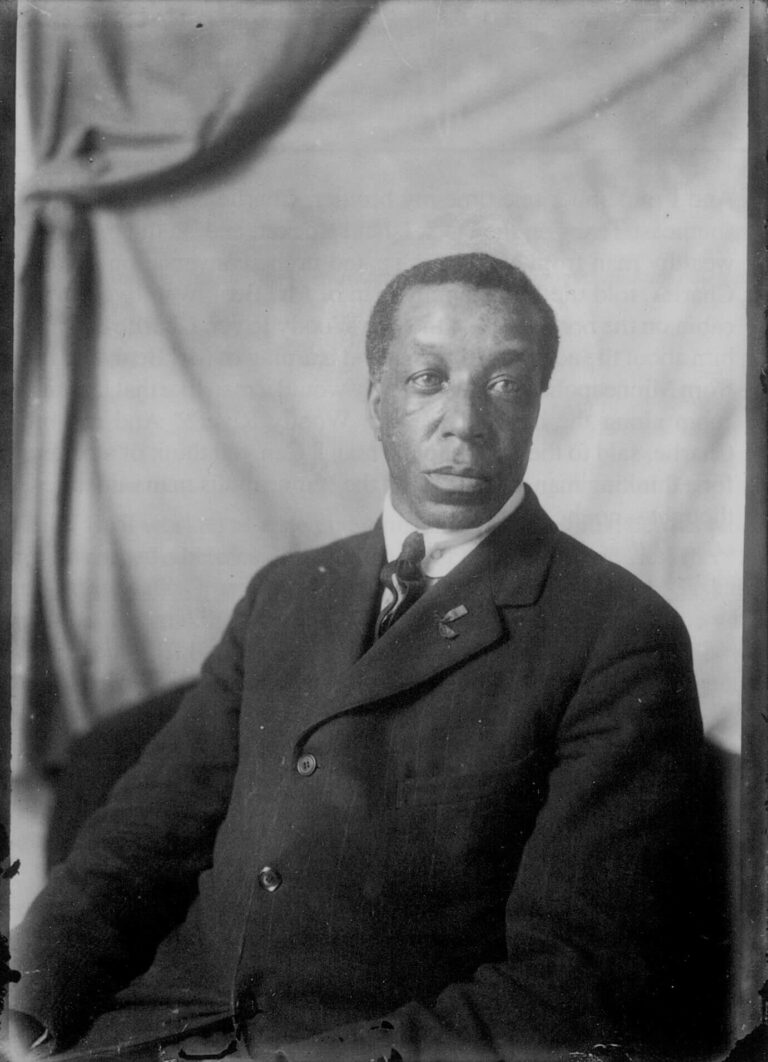
Beal grew up in Minneapolis as the son of a bookseller. He trained as an engineer and immigrated to western Manitoba in 1906 for his work. Beal was deeply involved with education and community initiatives and likely taught himself photography. Between about 1915 and 1925, he took portraits and captured views of activities in his community. Although only around fifty of his glass plate negatives survive, they provide a rare record of Prairie life by a Black photographer. His camera and some of his work is in the collection of the Swan Valley Historical Museum in Manitoba.
Image: William S. Beal, Self-portrait (Big Woody district, Swan River, Manitoba), c.1918, black and white glass plate negative, Collection of Robert Barrow.
For further reading, see:
Barrow, Robert, and Leigh Hambly. Billy: The Life and Photography of William S.A. Beal. Winnipeg: Vig Corps Press, 1988.
Cassidy, Christian. “‘Every Inch a Gentleman’: Early Black Settler Billy Beal Was a Ground Breaker in Many Ways.” Winnipeg Free Press, February 18, 2018.
Fearon, Alyssa. “Why you need to know about Billy Beal, the great unsung Black photographer of early 1900s Manitoba.” CBC, August 20, 2020. www.cbc.ca/arts/why-you-need-to-know-about-billy-beal-the-great-unsung-black-photographer-of-early-1900s-manitoba-1.5692446
Vernon, Karina. “William Sylvester Alpheus Beal (1874–1968),” “Big Woody,” and “3 Glass-Plate Negative.” In The Black Prairie Archives: An Anthology, edited by Karina Vernon, 62–69. Waterloo: Wilfrid Laurier University Press, 2019.

-
Beam, Carl (1943, M'Chigeeng, Ontario–2005, Ottawa)
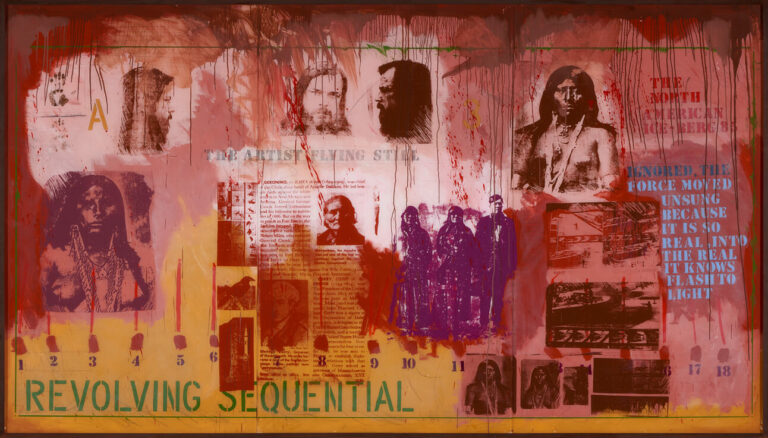
Beam was a First Nations (Ojibwe) painter and mixed-media artist. He used photography, collage, archival images, and photo-transfer techniques to explore Anishinaabe experiences, histories, and traditions, as well as to critique colonialism and unravel Western assumptions. In 1986, the National Gallery of Canada purchased his work The North American Iceberg, 1985. It was the first contemporary artwork by an Indigenous artist to be collected by the institution.
Image: Carl Beam, The North American Iceberg, 1985, acrylic, photo-serigraph, and graphite on Plexiglas, 213.6 x 374.1 cm, National Gallery of Canada, Ottawa. © Estate of Carl Beam / CARCC Ottawa 2023.
For further reading, see:
Ernst, Stacy A. “Going Beyond the Archival Grid: Carl Beam and Greg Curnoe’s Decolonization of a Colonizing Space.” World Art 6, no. 1 (2016): 85–102.
Hill, Greg. Carl Beam: The Poetics of Being. Ottawa: National Gallery of Canada, 2010.

-
Benner, Ron (b.1949, London, Ontario)
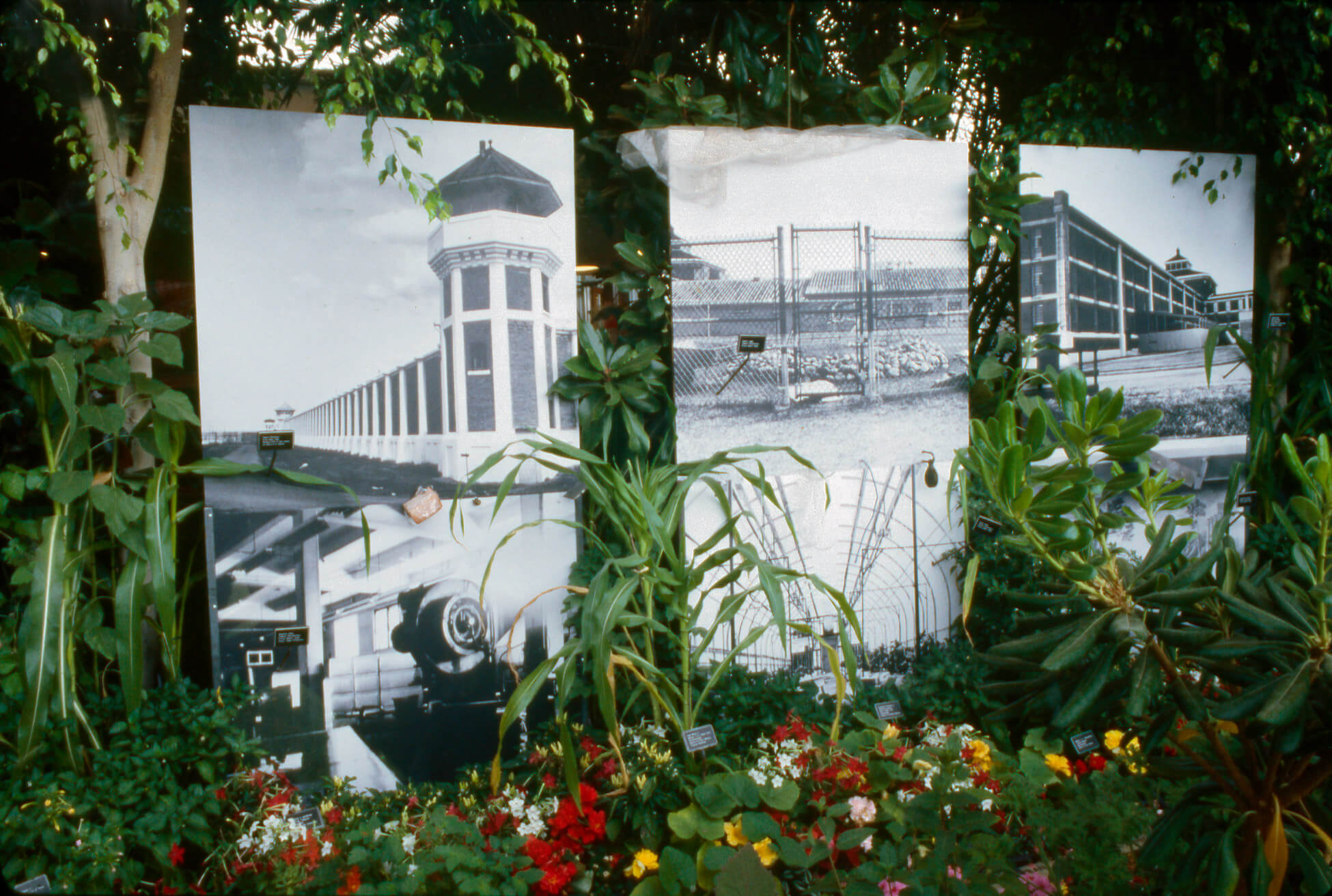
Based in London, Ontario, Benner began working with black and white photographic murals in the mid-1970s and is especially known for his garden installations. His mixed-media photographic installations explore the history and politics of food. His work also addresses themes relating to colonial legacies, globalization, and industrial food production.
Image: Ron Benner, Américan Cloisonné (detail), 1987–88, mixed-media photographic / garden installation, variable dimensions, Civic Plant Conservatory, Saskatoon.
For further reading, see:
Benner, Ron. Ron Benner: Gardens of a Colonial Present. London: Museum London, 2008.

-
Boyd, John A. (1865, Emyvale, Ireland–1941, Toronto) and John H. Boyd (1898, Toronto–1971, Toronto)
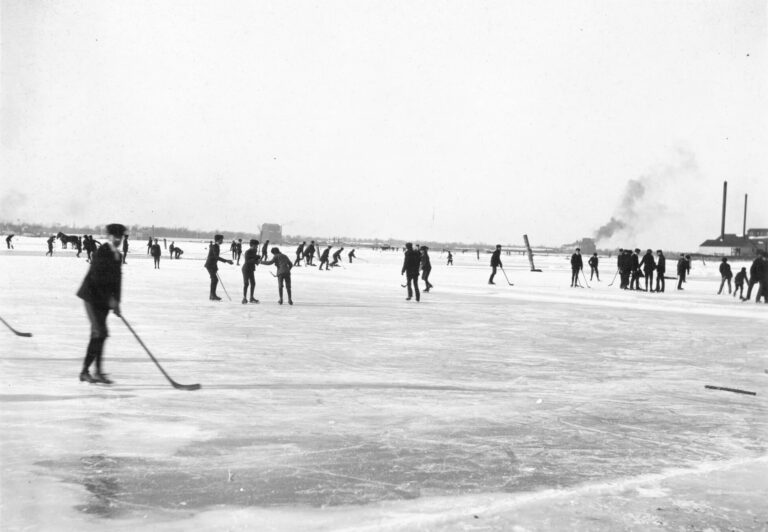
Boyd Sr. immigrated from Ireland as a child and became a prolific and skilled amateur photographer, his passion facilitated by a career in the railway business. He penned articles for photography journals across North America and befriended and corresponded with George Eastman, founder of the Eastman Kodak Company. His photographs, including landscapes, urban scenes, and photos of military training, transportation, and leisure, are held at the Ontario Archives and at Library and Archives Canada.
John A. Boyd’s son, John H. Boyd, was the first staff photographer for the Toronto-based newspaper the Globe (now called the Globe and Mail), from 1922 to 1964. A leader in the field of Canadian photojournalism, Boyd Jr. helped found the Commercial and Press Photographers Association of Canada. The City of Toronto Archives hold Boyd Jr.’s negatives from his time at the Globe and Mail, which capture significant moments in Toronto’s history. Both Boyds were interested in the development of photographic technology. Boyd Sr. built his first camera, and Boyd Jr. is thought to be the first Canadian news photographer to use a flash and to transmit a photograph electronically.
Image: John Boyd Sr., Playing Hockey on the St. Clair River in Sarnia, c.1890, black and white photo print, Archives of Ontario, Toronto.
For further reading, see:
City of Toronto Archives, Globe and Mail Fonds 1266.
Koltun, Lilly, ed. Private Realms of Light: Amateur Photography in Canada: 1839–1940. Toronto: Fitzhenry & Whiteside, 1984, 306.
Lansdale, Robert. “John H. Boyd and His Camera…” Graflex Historic Quarterly 14, no. 2 (2009). ghq.graflex.org/GHQ-14-2.pdf.
Plummer, Kevin. “Historicist: The Two John Boyds.” Torontoist, December 17, 2011. torontoist.com/2011/12/historicist-the-two-john-boyds/2/.
Professional Photographers of Canada, “About PPOC,” accessed May 11, 2021. www.ppoc.ca/about.php.

-
Brooks, Reva (1913, Toronto–2004, San Miguel de Allende, Mexico)
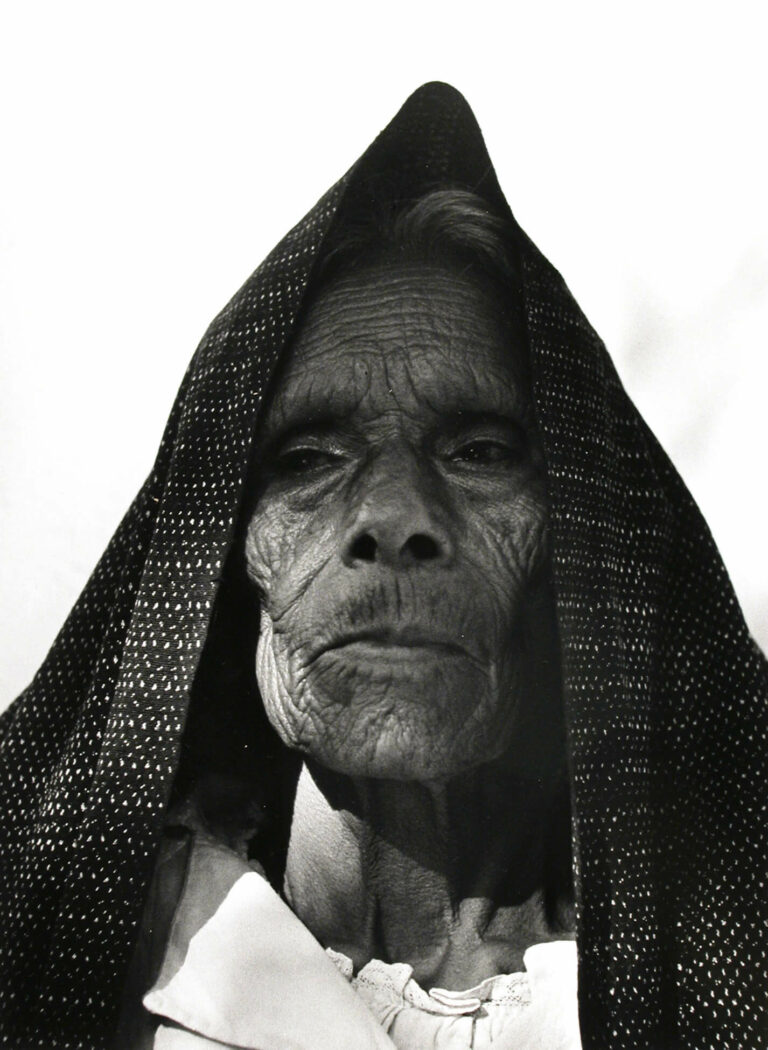
Brooks was born Reva Silverman and was the daughter of Jewish Polish immigrants. She married landscape painter Leonard Brooks (1911–2011) in 1935. In the late 1940s, the Brooks immigrated to Mexico, where they assisted in establishing an international art colony in the town of San Miguel de Allende and hosted a circle of friends that included Marshall McLuhan and Mexican painter David Alfaro Siqueiros. There Reva Brooks developed an interest in photography and worked with a Rolleiflex to produce tightly cropped portraits, primarily of Indigenous subjects in Mexico. Photographer and editor Minor White featured one of Brooks’s photographs on the cover of the influential Aperture magazine in 1952. In 1955, MoMA curator Edward Steichen included one of Brooks’s first photographs, an image of a child who had recently died, in Steichen’s Family of Man exhibition, the first blockbuster photography exhibition. Although Brooks stopped photographing in the mid-1960s, she was named by the San Francisco Museum of Art as one of the top fifty women photographers in 1975, and the Art Gallery of Ontario mounted a solo exhibition in 2002, shortly before her death at age ninety.
Image: Reva Brooks, Anciana Dona Chencha (Old Dona Chencha), printed in 1999, gelatin silver print, image: 29.9 x 22.9 cm, edition of 25, Stephen Bulger Gallery, Toronto.
For further reading, see:
Brooks, Reva, Marilyn Westlake, and Margot Smallwood Boland. Reva Brooks Photographs. Toronto: M+M Art Press, 2003.
Mann, Margery, et al. Women of Photography: An Historical Survey. San Francisco: San Francisco Museum of Art, 1975.
“Reva Brooks: Photographer Extraordinaire.” Queen’s Quarterly 105, no. 3 (Fall 1998): 434–44.
Virtue, John. Leonard and Reva Brooks: Artists in Exile in San Miguel de Allende. Montreal and Kingston: McGill-Queen’s University Press, 2001.

-
Burley, Robert (b.1957, Picton, Ontario)
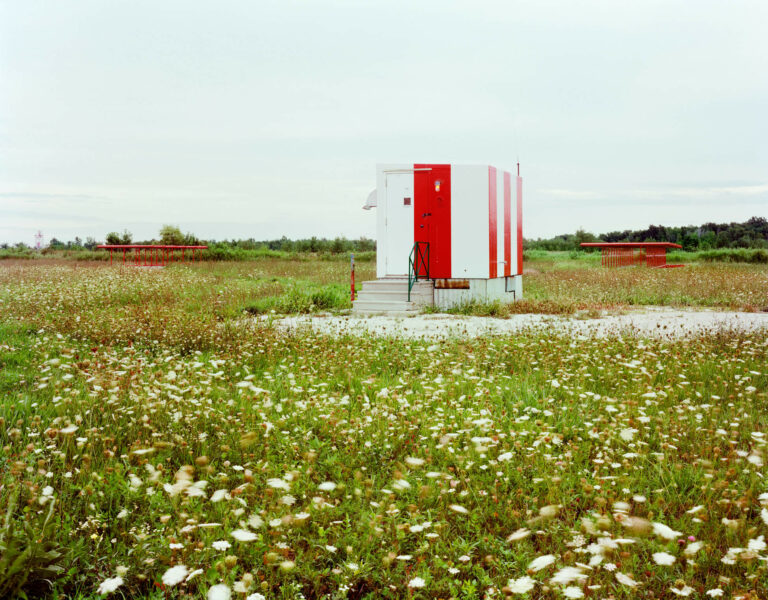
Burley is a Toronto-based photographer whose work explores how nature and urban environments intersect. In the mid- to late 1980s, he produced notable series dedicated to specific locales. The Don Valley series, 1981–84, investigates an area of Toronto where parkland, transportation networks, and industry converge. In his ORD O’Hare Airfield series, 1984–88, he photographed the infrastructure of the Chicago airport and its surrounding prairie environment. Burley was one of three photographers to participate in Viewing Olmstead, 1989–96, a commission for the Canadian Centre for Architecture in Montreal, which explored the North American parks designed by landscape architect Frederick Law Olmsted (1822–1903). Burley is a professor at Toronto Metropolitan University.
Image: Robert Burley, Queen Anne’s Lace, O’Hare Airfield, 1985, chromogenic print, 51 x 61 cm.
For further reading, see:
Burley, Robert. “O’Hare: Airport on the Prairie.” Essay by Larry Viskochil. Chicago: Chicago Historical Society, 1988.
Lambert, Phyllis, ed. Viewing Olmsted: Photographs by Robert Burley, Lee Friedlander and Geoffrey James. Montreal: Canadian Centre for Architecture, 1996.

-
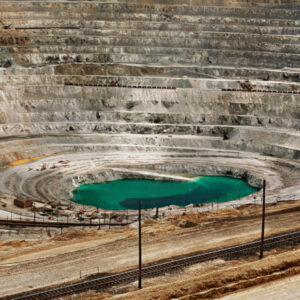 About the Authors
About the Authors
This book is written by art historians Sarah Bassnett and Sarah Parsons.
-
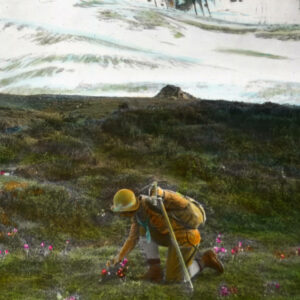 More Online Art Books
More Online Art Books
Read online or download the ACI’s incredible library of art books for free in French and English.
-
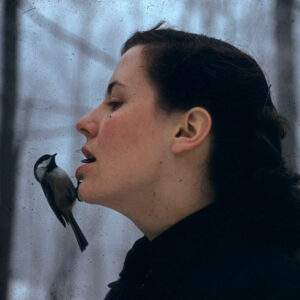 Preface
Preface
Photography has become so thoroughly integrated into our everyday experience that it may be hard to imagine life without it.
